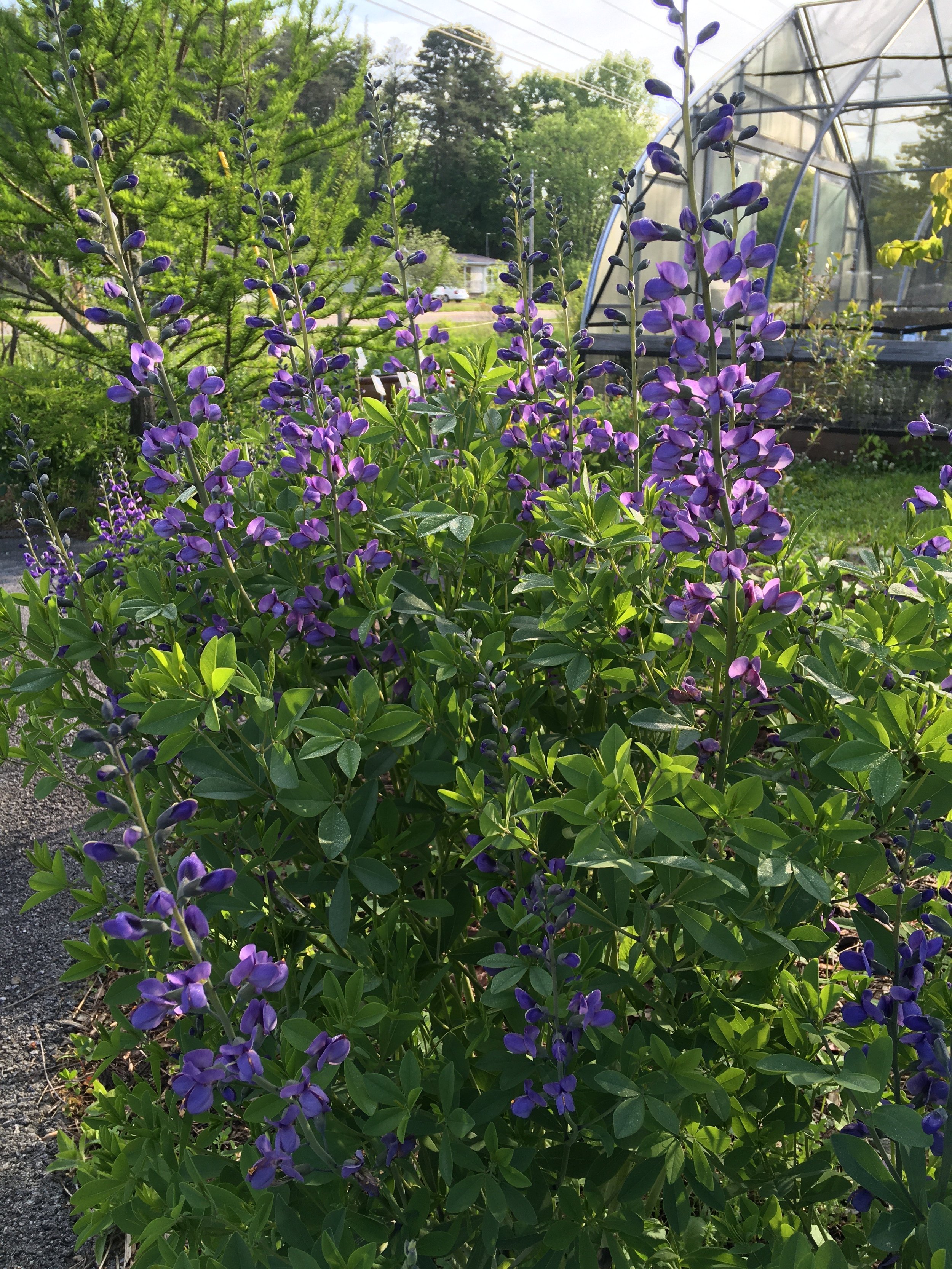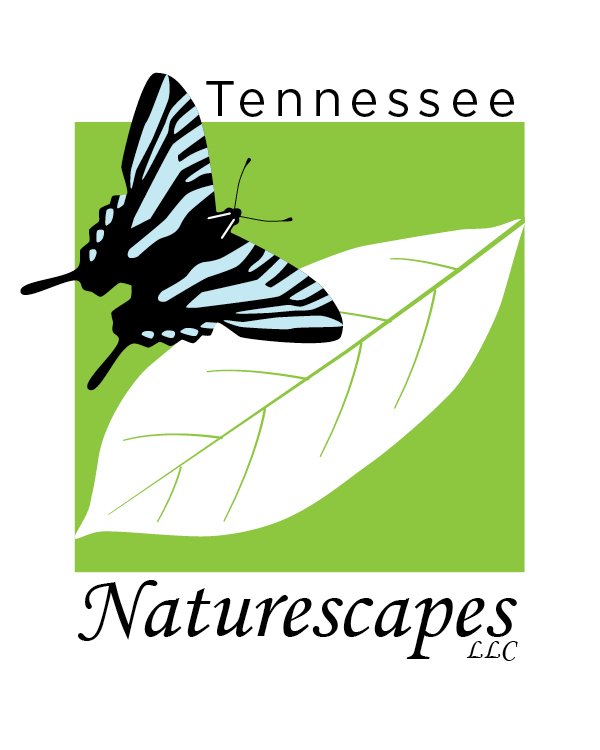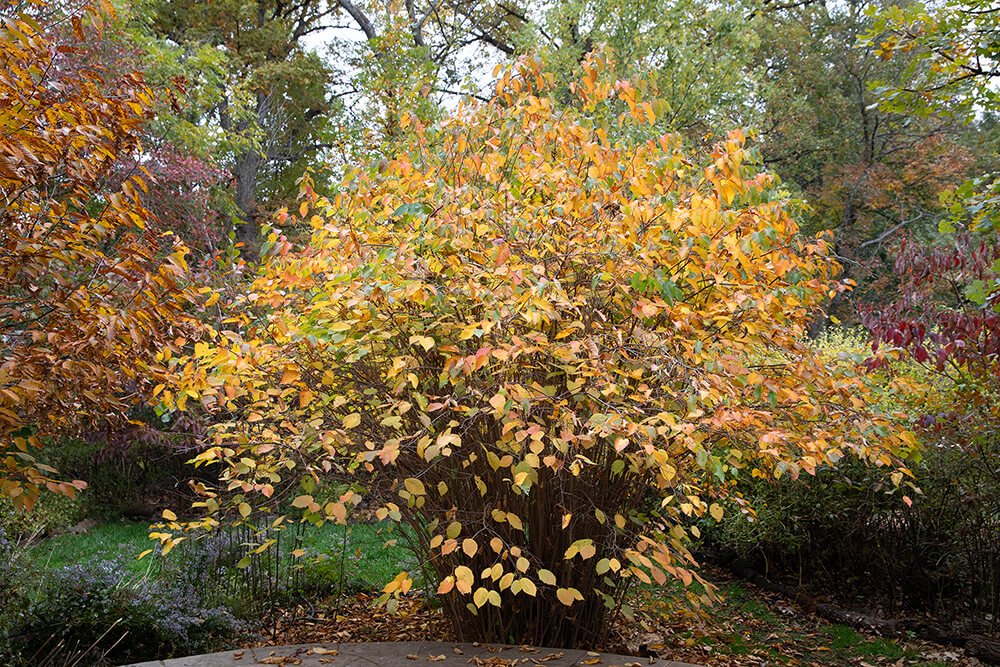 Image 1 of 3
Image 1 of 3

 Image 2 of 3
Image 2 of 3

 Image 3 of 3
Image 3 of 3




Baptisia australis - (Blue Wild Indigo)
GARDEN SITE: ☀️-⛅. Average, Dry to Medium, Well-drained Soil. Tolerates poor soils and drought.
SIZE: ⬆3-4 ft. ↔3-4 ft.
FLOWERS: Showy Indigo Blue blooms May-June
WILDLIFE: Attracts Butterflies
LARVAL HOST TO: Orange sulphur, Clouded Sulphur, Frosted Elfin, Eastern Tailed Blue, Hoary Edge, and Wild Indigo Duskywing.
ZONE: 3-9
DISTRIBUTION: AL , AR , CT , DC , GA , IA , IL , IN , KS , KY , MA , MD , MI , MO , NC , NE , NH , NJ , NY , OH , OK , PA , TN , TX , VA , VT , WV
Also called indigo weed, rattleweed, rattlebush and horsefly weed. This eye catching perennial can be found near the edge of woods, the wetlands and sunny places in between. It's woody base supports it's upright, shrub-like growing habit. The bluish green foliage accents spires of pea shaped violet flowers. Can be used as blue dye. Be aware some species in this genus are toxic.
Plant in prairies, meadows, gardens etc. Attractive seedpods. Best as a specimen or in small groups. Rabbit, Drought, Erosion, Clay Soil, Dry Soil and Shallow-Rocky Soil Tolerant.
The name of the genus is derived from the Ancient Greek word bapto, meaning "to dip" or "immerse", while the specific name australis is Latin for "southern".
GARDEN SITE: ☀️-⛅. Average, Dry to Medium, Well-drained Soil. Tolerates poor soils and drought.
SIZE: ⬆3-4 ft. ↔3-4 ft.
FLOWERS: Showy Indigo Blue blooms May-June
WILDLIFE: Attracts Butterflies
LARVAL HOST TO: Orange sulphur, Clouded Sulphur, Frosted Elfin, Eastern Tailed Blue, Hoary Edge, and Wild Indigo Duskywing.
ZONE: 3-9
DISTRIBUTION: AL , AR , CT , DC , GA , IA , IL , IN , KS , KY , MA , MD , MI , MO , NC , NE , NH , NJ , NY , OH , OK , PA , TN , TX , VA , VT , WV
Also called indigo weed, rattleweed, rattlebush and horsefly weed. This eye catching perennial can be found near the edge of woods, the wetlands and sunny places in between. It's woody base supports it's upright, shrub-like growing habit. The bluish green foliage accents spires of pea shaped violet flowers. Can be used as blue dye. Be aware some species in this genus are toxic.
Plant in prairies, meadows, gardens etc. Attractive seedpods. Best as a specimen or in small groups. Rabbit, Drought, Erosion, Clay Soil, Dry Soil and Shallow-Rocky Soil Tolerant.
The name of the genus is derived from the Ancient Greek word bapto, meaning "to dip" or "immerse", while the specific name australis is Latin for "southern".
GARDEN SITE: ☀️-⛅. Average, Dry to Medium, Well-drained Soil. Tolerates poor soils and drought.
SIZE: ⬆3-4 ft. ↔3-4 ft.
FLOWERS: Showy Indigo Blue blooms May-June
WILDLIFE: Attracts Butterflies
LARVAL HOST TO: Orange sulphur, Clouded Sulphur, Frosted Elfin, Eastern Tailed Blue, Hoary Edge, and Wild Indigo Duskywing.
ZONE: 3-9
DISTRIBUTION: AL , AR , CT , DC , GA , IA , IL , IN , KS , KY , MA , MD , MI , MO , NC , NE , NH , NJ , NY , OH , OK , PA , TN , TX , VA , VT , WV
Also called indigo weed, rattleweed, rattlebush and horsefly weed. This eye catching perennial can be found near the edge of woods, the wetlands and sunny places in between. It's woody base supports it's upright, shrub-like growing habit. The bluish green foliage accents spires of pea shaped violet flowers. Can be used as blue dye. Be aware some species in this genus are toxic.
Plant in prairies, meadows, gardens etc. Attractive seedpods. Best as a specimen or in small groups. Rabbit, Drought, Erosion, Clay Soil, Dry Soil and Shallow-Rocky Soil Tolerant.
The name of the genus is derived from the Ancient Greek word bapto, meaning "to dip" or "immerse", while the specific name australis is Latin for "southern".












